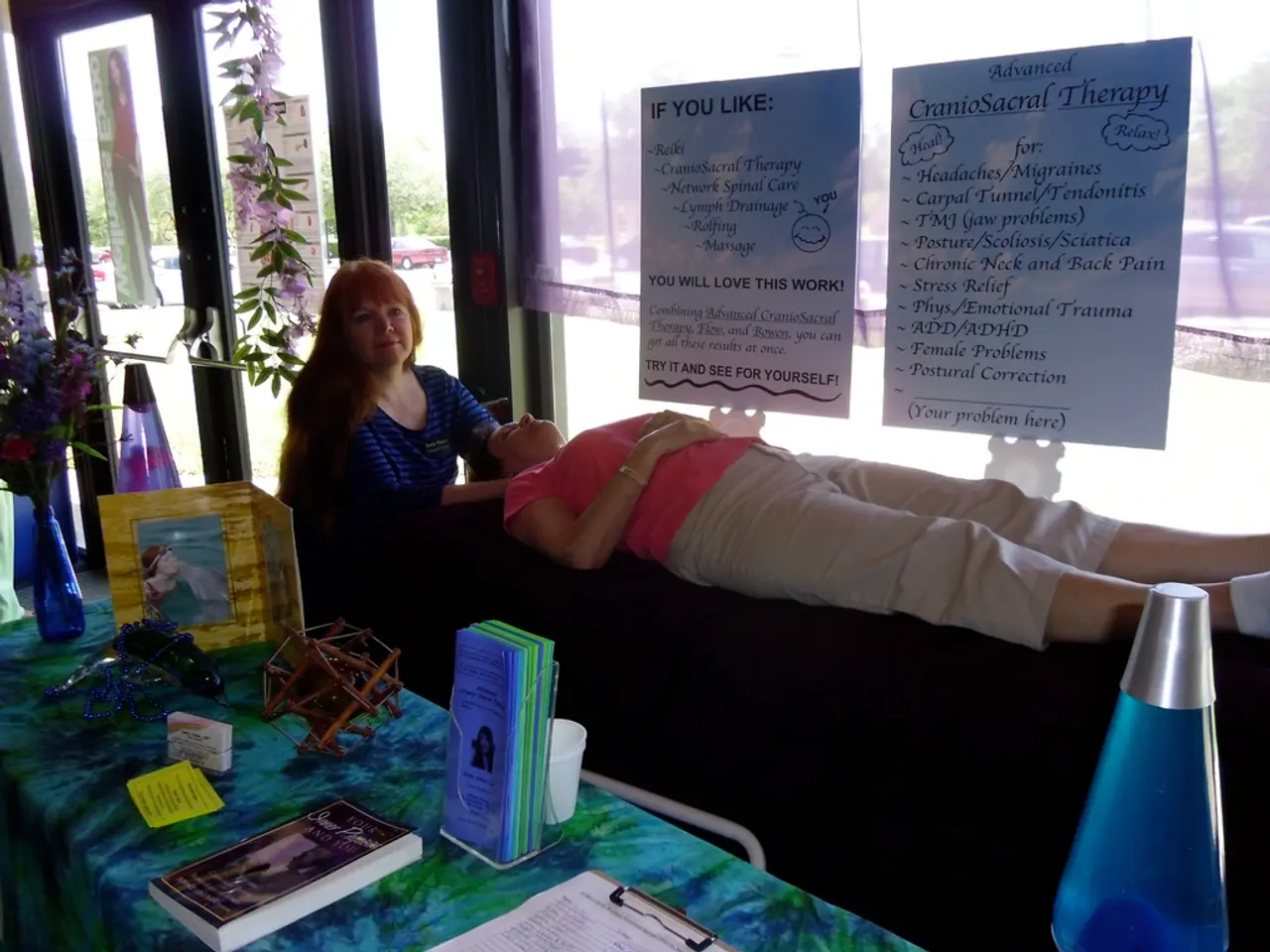Treatment Method: TMS, Its Applications, Advantages, Drawbacks, and Financial Implications
Transcranial Magnetic Stimulation (TMS), also known as repetitive transcranial magnetic stimulation (rTMS), is a non-invasive treatment that has shown promising results in managing various conditions. This innovative procedure uses electromagnetic pulses to stimulate nerve cells, offering an alternative for individuals who may not respond to traditional treatments.
During a TMS session, patients wear earplugs, sit comfortably in a chair, and feel a tapping or knocking sensation beneath the magnetic coil. The treatment is performed as an outpatient procedure by a TMS technician or doctor and lasts between 30 to 60 minutes. A course of TMS therapy is typically repeated for about 4 to 6 weeks.
One of the most well-known applications of TMS is in the treatment of depression. By stimulating nerve cells in the prefrontal cortex, a part of the brain involved in depression symptoms, TMS may help alleviate depressive episodes. TMS has been FDA-approved for this use and has had success helping people who don't respond to antidepressant medication and psychotherapy.
Besides depression, TMS may offer benefits for a range of conditions. For instance, it could potentially improve chronic pain conditions, such as fibromyalgia. TMS may also help reduce nicotine cravings by targeting the prefrontal cortex, making it a potential aid in smoking cessation programs.
In the realm of mental health, TMS may help with conditions such as obsessive-compulsive disorder (OCD), anxiety, post-traumatic stress disorder (PTSD), motor dysfunction due to Parkinson's disease, multiple sclerosis, or stroke. TMS may help with auditory hallucinations in schizophrenia by targeting the temporoparietal cortex, and it may improve symptoms of OCD, anxiety, and PTSD by inhibiting the activity in certain parts of the brain.
TMS may also have benefits for neurodegenerative diseases like Alzheimer's disease. It might alter the neural connections involved in memory and learning, potentially helping manage symptoms of both Alzheimer's disease and mild cognitive impairment. In a study, researchers used TMS on the motor cortex of people with MS, and the treatment, combined with physical therapy, decreased spasticity.
While TMS therapy has shown promising results, it's essential to consider potential risks. There's a risk of seizures with TMS therapy, but this side effect is rare. It's crucial to inform your healthcare provider about any metal implants or devices in your body before undergoing TMS, as the treatment may not be suitable for individuals with metal in their head, such as deep brain stimulators, electrodes, neck or brain stents, aneurysm clips or coils, shrapnel or bullet pieces, facial tattoos with metallic ink, metal plates, cochlear implants, permanent piercings, etc.
The cost of TMS therapy can vary significantly, with one course of treatment costing between $6,000 and $12,000 out of pocket. Prices may have increased since then, and it's recommended to consult with your insurance provider to determine coverage. In some cases, Medicare will cover TMS therapy if antidepressants and psychotherapy don't work for you.
The Max Planck Society (Max-Planck-Gesellschaft) is currently conducting research on TMS, aiming to develop new therapy approaches for depression and other mental disorders. As research continues, the potential applications and benefits of TMS are likely to expand, offering hope for those suffering from various conditions.





